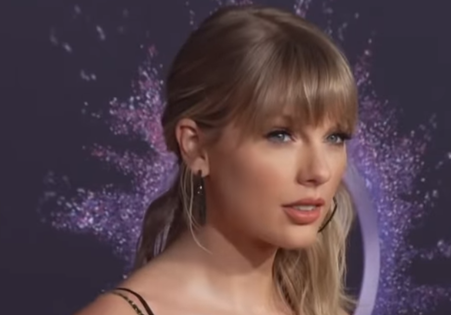The Importance of (Taylor’s Version)

January 31, 2022
“Alexa, play ‘The Way I Loved You (Taylor’s Version)’.”
In 2021, I got accustomed to adding the phrase “Taylor’s version” to any song she re-released in her albums, Fearless (Taylor’s Version) and Red (Taylor’s Version). Now, you may be wondering why I and millions of other Swifties do so. Well, these two words encased by a set of parentheses are more powerful than you may know.
To understand the significance of (Taylor’s Version), it is important to know who Swift is. In 2006, Swift began her career as a musical artist at 14-years-old when she signed with Big Machine Label. She quickly rose to fame by the time she was 16-years-old, when early hits such as “Love Story” emerged. In 2008, Swift released her Grammy-winning album Fearless, and Swift’s 1989 album kept up this streak of success in 2014, when 1989 was Grammy-nominated ten times. Not only that, but her albums following these award winning albums did not disappoint, as seen by Reputation in 2018. In 2022, her body of work has become increasingly impressive with albums such as Lover, folklore, evermore, Fearless (Taylor’s Version), and Red (Taylor’s Version) adding to her collection. These five albums, released in subsequent order, were actually not released until after Swift left Big Machine Label, due to the bullying that she faced.
In June 2019, Swift published a Tumblr post that accused two renowned music executives, music manager Scooter Braun and Big Machine Label founder Scott Borchetta, of bullying her. Braun, known for working with music superstars Justin Bieber and Ariana Grande, acquired the Big Machine Label Group through his company Ithaca Holdings. This made it so Swift, whose master recordings of her six albums that were all owned by Big Machine Label, was unable to own the rights to her albums.
In her Tumblr post, Swift said that Braun was an “incessant, manipulative bully,” because he now completely owns all her master albums, even after years of her trying to buy her own master recordings. In the same post, Swift stated that Borchetta, the person who refused to sell her master albums to her, was “someone whom the term ‘loyalty’ is clearly just a contractual concept [to].”
This accusation divided Swift’s fans into two factions: Swift’s supporters, and Braun’s supporters. Swift’s supporters tweeted #WeStandWithTaylor, and this even included famous musicians such as Halsey. Braun’s supporters included his clients like Demi Lovato and Bieber.
In the end, Swift joined Universal Music Group’s Republic Record, and struck a deal in which she would own all of her master albums. This means that she will own the rights to make, sell, and distribute her copies, and have a say over what her music would be used for.
(Taylor’s Version) is simply an exemplification of the ownership that she now has over her own music. It is the physical embodiment of how she finally received the rights that she was long denied, and is an addition to her titles that could be used to support her!
In 2019, she released Lover, followed by the releases of folklore and evermore. These three albums were brand new, and were not re-released albums. The novelty of the albums explains why (Taylor’s Version) was missing from the titles of the albums and the tracks. However, when she re-released Fearless and Red, (Taylor’s Version) was present to the right hand side of the names.
At Arcadia High School, plenty of students have enjoyed Swift’s music and support her by listening to (Taylor’s Version).
“My favorite songs from Taylor Swift are ‘Love Story (Taylor’s Version),’ ‘Always & Forever (Taylor’s Version),’ ‘You Belong With Me (Taylor’s Version),’ and ‘22 (Taylor’s Version),’” said junior Crystal Kim.
“Taylor Swift is one of my favorite artists because her music made my childhood,” said junior Keanna Luu. “One of my favorite albums is Red (Taylor’s Version), and I hope to see her re-release 1989 in her own version.”
The next time you find yourself wanting to listen to a Swift song, say or type “Taylor’s version” at the end to listen to Swift’s revamped vintage classic tracks!
Photo courtesy of WIKIMEDIA COMMONS
